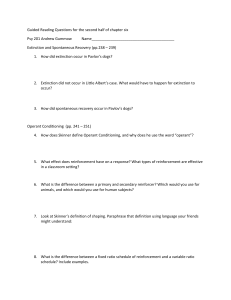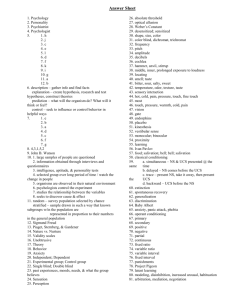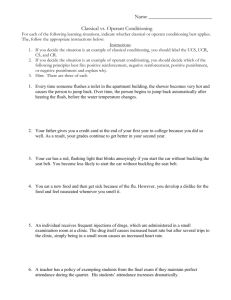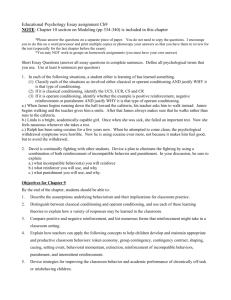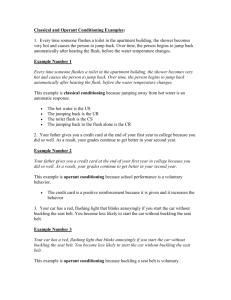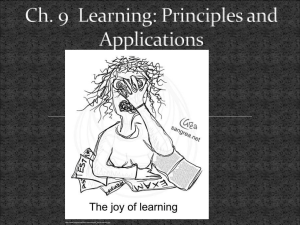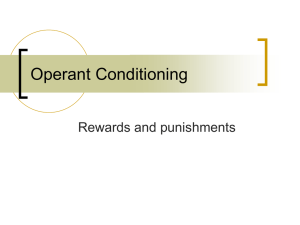A Review of Classical and Operant Conditioning
advertisement
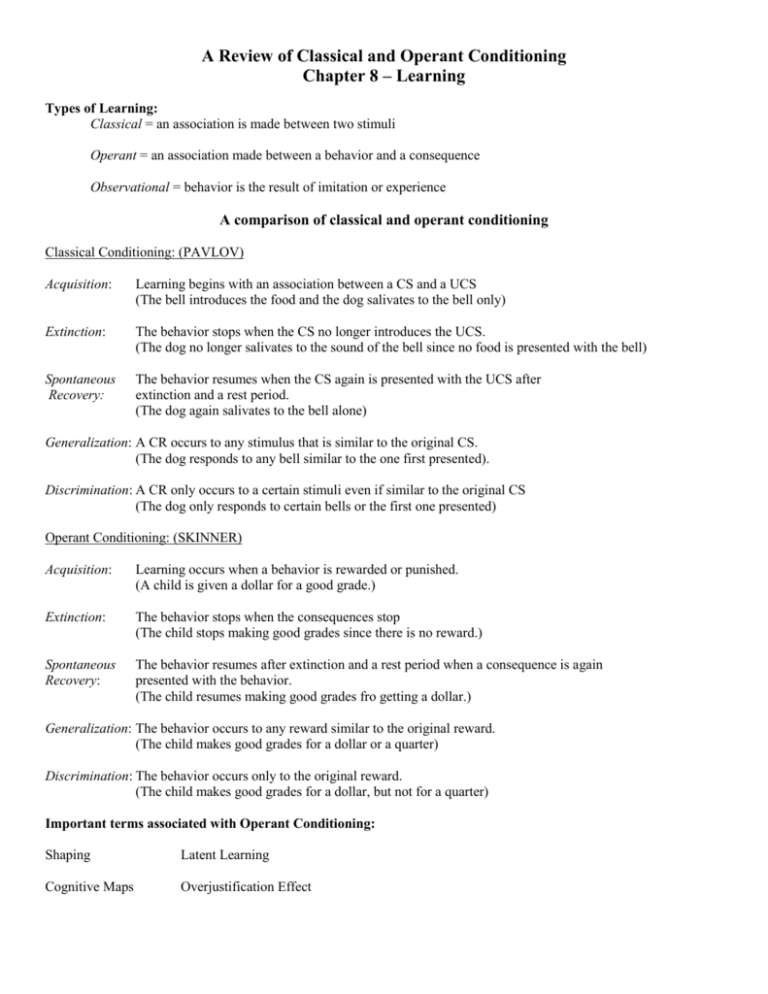
A Review of Classical and Operant Conditioning Chapter 8 – Learning Types of Learning: Classical = an association is made between two stimuli Operant = an association made between a behavior and a consequence Observational = behavior is the result of imitation or experience A comparison of classical and operant conditioning Classical Conditioning: (PAVLOV) Acquisition: Learning begins with an association between a CS and a UCS (The bell introduces the food and the dog salivates to the bell only) Extinction: The behavior stops when the CS no longer introduces the UCS. (The dog no longer salivates to the sound of the bell since no food is presented with the bell) Spontaneous Recovery: The behavior resumes when the CS again is presented with the UCS after extinction and a rest period. (The dog again salivates to the bell alone) Generalization: A CR occurs to any stimulus that is similar to the original CS. (The dog responds to any bell similar to the one first presented). Discrimination: A CR only occurs to a certain stimuli even if similar to the original CS (The dog only responds to certain bells or the first one presented) Operant Conditioning: (SKINNER) Acquisition: Learning occurs when a behavior is rewarded or punished. (A child is given a dollar for a good grade.) Extinction: The behavior stops when the consequences stop (The child stops making good grades since there is no reward.) Spontaneous Recovery: The behavior resumes after extinction and a rest period when a consequence is again presented with the behavior. (The child resumes making good grades fro getting a dollar.) Generalization: The behavior occurs to any reward similar to the original reward. (The child makes good grades for a dollar or a quarter) Discrimination: The behavior occurs only to the original reward. (The child makes good grades for a dollar, but not for a quarter) Important terms associated with Operant Conditioning: Shaping Latent Learning Cognitive Maps Overjustification Effect A COMPARISON OF REINFORCEMENT VS. PUNISHMENT Positive (giving something) Negative (taking something away) Reinforcement (encourages a behavior) A piece of candy for buckling seatbelt The buzzing sound stops when you buckle your seatbelt Punishment (discourages a behavior) A spanking for not buckling your seatbelt Time Out for not buckling your seltbelt Reinforcement can be primary (innately satisfying; chocolate) or secondary (learned to be satisfying, money). It can also be continuous or partial (intermittent) Partial Schedules of Reinforcement Ratio schedules (numbers) Fixed ratio: vs. Interval schedules (timing) rewards offered after a set number of responses. (Being paid per item you sew, factory quotas) Variable ratio: rewards offered after an unpredictable number of responses (slot machines, hitting in a batting cage) Fixed interval: rewards offered after a fixed time period. (semester grades, monthly paychecks) Variable interval: rewards offered after varying time periods. (pop quizzes, arrival of the mail, fishing) Observational Learning (BANDURA) Prosocial Behavior: imitating positive behaviors (role modeling) Antisocial Behavior: imitating negative behaviors (Bobo Doll Experiment)
